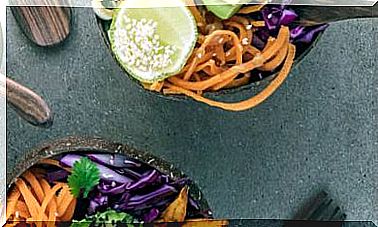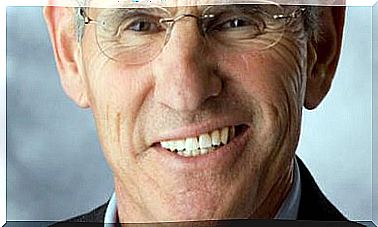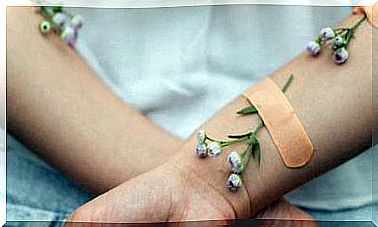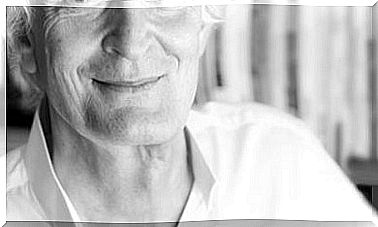“Conflicts Are Solved With Non-violent Communication, Clearly Explaining What We Want”
Because a confrontation always hides an unexpressed need. One should do psychosocial hygiene and ask oneself every day “How are you?”
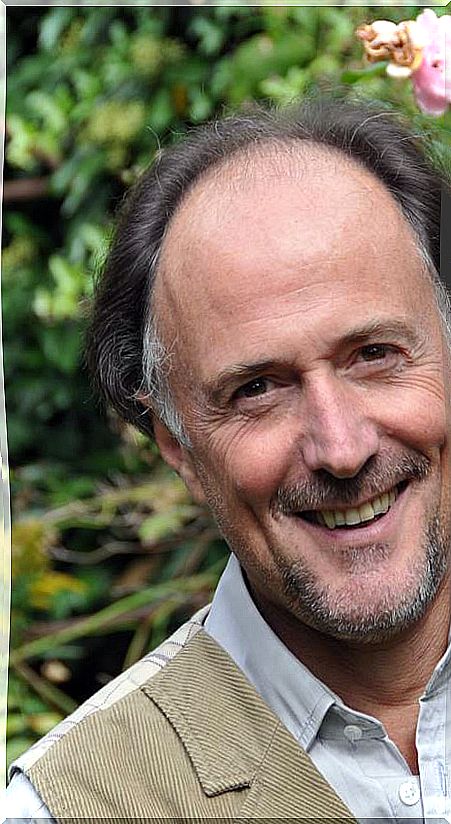
Thomas d’Ansembourg, a psychotherapist specialized in non-violent communication, is one of the greatest disseminators of this form of communication that allows conflict resolution and self-knowledge. He is the author of several best sellers: From me to us and Stop being kind and be authentic, of which more than a million copies have been sold in France.
How to educate ourselves in the art of the encounter
His book Peace is Learned, written with his friend David van Reybrouck after the brutal attacks in Belgium and the Bataclán room, is a powerful tool to create a new society away from violence.
Why did you focus all your work on violence within communication?
An encounter with Marshall Rosenberg, creator of Nonviolent Communication and mediator in numerous international conflicts, completely revolutionized my life. I was deeply moved just by saying: “I invite you to cross the greatest distance that a man can ever travel: the distance that exists between his head and his heart.” At that time I traveled a lot and never stopped. He worked as a lawyer, attended to young people with problems on the street and a thousand other activities … But he was not happy. My partners left me because I always wanted to be right and I kept running from one place to another. After meeting him, I left the legal profession and became a psychotherapist and disseminator of non-violent communication.
And then this book came along?
Writing this book was our obligation. It is a message to the leaders and citizens of the world, a commitment to peace, which will be possible if we establish new practices of psychospiritual hygiene, just as years ago daily hygiene habits were imposed when no one brushed their teeth every day. Peace is learned, it only requires training. And a citizen in peace is a peacemaker citizen.
And how do you find this inner peace that, according to you, is the basis of outer peace?
It requires a daily exercise in self-empathy and self-questioning. The heart does not close by chance.
It is fear, fatigue, sadness, anger and being fed up that lead us to conflict.
For this reason, you have to observe yourself carefully every day to determine why I am afraid of others, because I do not listen to them and to know what it is that blocks my approach to others. In fact, our original impulse is to go towards others because it is what gives us the most joy of living.
How can we do it?
One must ask each day: “How are you?” This question connects us with ourselves and with the present. Non-violent communication proposes to first listen to those pleasant feelings that are in me such as joy, trust, tenderness resulting from those needs that are satisfied. Frequenting these positive parts of oneself gives us a clue of what nourishes me. It serves as a compass to know where I need to go.
And is this enough?
Unclear. At the same time, I must attend to those unpleasant feelings that allow me to realize what are the deep needs that I am not attending and lead me to discomfort. So I can take care of satisfying them before the negativity builds up and someone or something comes along that makes the glass overflow and explode.
And that happens to us very often …
We must take responsibility for these outbursts, which are not actually caused by the outside, but by not taking care of myself. This is the psychospiritual hygiene that I was referring to in order to create quality links with those around us.
How can we overcome the tendency to run away from ourselves?
The practice of mindfulness can be a helpful element to get in touch with oneself and create a state of inner peace that inspires and regenerates. But in mindfulness words are not used, rather it is sought to enter a state of no thought. In contrast, non-violent communication proposes putting words to what we feel to better manage the satisfaction of our needs, expressing them to ourselves and to others to take care of satisfying them.
Putting words helps us to realize …
It leads us to transformation and action thanks to the awareness and expression of what we feel and need. When I realize that I am angry because I need recognition, I can wait a thousand years for it to be recognized; Or take responsibility for it and go to my boss’s door to explain what is happening to me. If I am sad because my wife does not listen to me, I can wait for her to change by magic; Or express to him that I need to feel understood. And all these transformations go through the word.
And so we also get more peace?
If you want peace in your life, transform conflict into encounter. It is a discipline that is learned. Inner peace requires commitment. It is a process.
What is your personal experience in this regard?
Working as a lawyer, he always ran from one place to another. I was exhausted but never found a time to sit down, so my love affairs went from bad to worse. Nobody wanted to stay with someone so elusive. I realized that if I wanted a stable relationship, I had to change my way of functioning and I went to therapy. There I understood that, in reality, what I was doing was running away from myself out of fear. This led me to enter into a therapeutic process that in turn awakened my desire to become a therapist.
What changed? What was it that clicked?
I learned to get out of the automatisms and traps that I created in order not to feel myself. I found the pleasure of following my pace, much slower than it imposed me, of embracing my talents and my creativity. I am a good example of the peacemaking benefits that come from listening to yourself. Non-violent communication should be taught in schools so that, from a young age, we all know what we are and do not disconnect from our natural inner joy.
It sure has many benefits …
Knowing ourselves deeply makes us be more creative and supportive citizens. The attacks in Brussels and Paris reveal our educational errors: these young terrorists had been educated in our schools. And the question is: how do our young people learn to manage their frustration and need to belong? What does society do to accommodate their needs? It is urgent to recreate a new way of connecting with others.
Does it denounce that we are not capable of creating a community and that we promote an exacerbated individualism?
Effectively. Together we have created hyper-individualistic societies in which young people feel so lost that they feel they have nothing to lose if they die. This is what they tell us when they blow themselves up with a bomb behind their backs: life has no meaning for them. That’s how deep your feeling of emptiness and grogginess is.
And how would non-violent communication help?
Behind every violent act, behind every conflict, there is always an unspoken need. However, it is rare that those involved directly express what they require. Most often, they criticize each other. There is lack of expression and lack of listening. Non-violent communication teaches you to clearly express what you want and also to discern what the other needs beyond what they say. It teaches you to develop empathy.
Most conflicts are the result of a misunderstanding in communication caused by a combination of poor expressions and awkward listening.
Let’s take some examples.
When a mother sees her son kick and says: “If you kick, you go to your room.” This breaks the link. The two people are separated from each other. Instead, you can try to understand what has led the child to kick, asking: “What’s wrong, are you sad? Has school gone badly and is that why you are angry? ” This brings together and allows decoding what the behavior hides. A happy, relaxed child does not kick.
We want more to be right than to listen.
This is the great key … Marshall Rosenberg said:
“In life you have to make a fundamental choice: to be happy or to be right.”
As a lawyer, I was one of those who always wanted to be right and exported this operation to my private life. I realized how wrong I was. Because when a person wants to always be right, in reality, he is a fragile person with little confidence who seeks the approval of the other.
We do not know how to listen: we give advice, solutions, we tell others what to do, but we are unable to listen, which means closing our mouths.
Many parents believe that they are listening to their children when they are bombarding them with their advice. Listening is allowing the other to express themselves freely, enduring the discomfort that they may suppose because of what they reproach or criticize us. It is about listening to what he wants us to understand about the effects of our way of behaving. Non-violent communication is a sign of strength and self-knowledge. But instead of making the effort to attend to the other, we react, we immediately jump on the defensive, which breaks the bond. When I give training in non-violent communication companies, managers tell me: “You have taught us to listen. We did not know”.
And does this listening go more through the heart than through the brain?
It goes through opening the heart and also through self-knowledge. If I have not attended to my anger, I will not be able to attend to the other’s. If I have not listened to my sadness, I will not be able to accompany that of others. It will overwhelm and overwhelm me, clouding my listening skills. In the best of cases I will try to console or get the person out of there by buying them a beer … Or I will find a solution. What is not known is feared, hence the need for an emotional education. It would be necessary to educate in the art of the encounter.
Write that gratitude is another of the bases of well-being.
Numerous neuroscientific studies show the physical and psychological benefits that derive from taking a few moments each day to be grateful for what life gives us. People who do so are in better health, recover before illness and do not suffer from cardiovascular accidents. They are also happier and more tolerant. If several times a day, I am glad to be alive, when I have a brush with someone, I look for a way to rediscover that state of love for life that connects me with the pleasure of living.
Gratitude is like planting a seed: you have to wait for the flower to grow, you will not see its effects right away.
On the other hand, if I spend the day complaining, without daring to transform anything, in one of these frictions I can end up breaking the other’s face. When I have learned to manage my emotions and achieve my peace, I can go from me to us to create a community.
And how do you fit the differences?
It is about each one contributing their color, their talent. It is like an orchestra: each one plays an instrument and the idea is to play with it and not against it, knowing each one how their instrument is. This is how music becomes harmonious. A happy, fertile and supportive us cannot be made without everyone knowing each other well.
Surely you know many stories that illustrate it
One day a young man called me from Holland. It was one of the street boys I was looking after, but I had lost track of him: “Thomas, I have a revolver in my hand and I’m going to shoot myself. I can not anymore”. He was a very violent boy. And what could I do from the phone more than two hours away? Telling someone that he is about to blow his head off, don’t worry, it will pass, it will create an insurmountable pit between the two of you. So I opted for empathy. “I understand that you are at the end of the tunnel and you don’t think there is a way out. You are about to kill yourself because you are fed up. Nothing makes sense in your life and you think the only solution is to shoot yourself in the head to disappear ”. He, who was completely alone on the edge of the abyss, suddenly felt that someone understood him. There was someone on the other side. And, little by little, she calmed down until she told me: “It feels good to talk to you. I realize that I get nervous very quickly and that I have overdone it. I will have to talk to you more. “
A good example of empathy.
This is the power of empathy: naming what happens to the other showing that I understand without trying to solve the problem. Another example: the director of a nursery school explained to me how well applying non-violent communication had been for her. A very small girl came and cried because she did not want to be separated from her mother. One of the teachers told him: “Don’t be sad, we have a lot of things to play here.” The girl cried anyway and then the teacher scolded her: “I’m not going to listen to you anymore. I’m going to play with the others ”. With this, not only did he not respect the girl’s sadness, but he also blamed her for feeling it. The director decided to take care of herself, bent down to get level with the girl’s eyes and said: “Are you sad?” “Yes,” the girl replies. “Would you have liked to stay with your mom?” “Yes,” continues the girl. “I get it”. “Would you like to come and play with me now?” “Okay,” agreed the girl. This is not magic. It’s about empathy creating a we.
Instead of relationships based on the imposition of power …
Exactly. For centuries, we have been immersed in relationships of domination-submission, aggression-submission, manipulation-seduction. They are tension relationships based on mistrust. But among human beings, relationships based on trust and expansion can be built, seeking common welfare and synergies. You just have to reprogram the operating system to eliminate the enormous amount of subtle violence that we exert both on ourselves and on others based on guilt and should. The most widespread violence is that of white collar. Neuroscience confirms that children are empathic by nature and it is our upbringing that drives away this natural impulse to get closer to others.
Does non-violent communication also improve relationships?
In the couple there is usually a friction of egos and, if I let only my ego act, then the conflict will explode. That is why it is important to use tensions to discover who I am on a deeper level. Many people enter the couple with the expectation that the other will satisfy all their needs and obviously that does not work. Too much pressure. It is convenient that there is an openness and acceptance that allows to let go of the ego so that an encounter between two authentic beings can be created beyond the friction. You have to learn to do this path.
But we are afraid …
The real fear is that if I show myself authentic, they won’t love me. But authenticity is what makes it possible to create quality and meaningful relationships in which when you say yes, you really do; and when one says no, it is not true …
Going through life without a mask and saying what you feel with simplicity makes relationships easier and lighter.
And once the conflict is faced, each one expressing what they feel and what they need, the relationship becomes nurturing. It may be that at first, when we begin to show ourselves as we are, some relationships will disappear. But it will be like a cleaning, the ones that are worth it will remain.
What role does spirituality play in non-violent communication?
We are by nature spiritual beings. Since I am a child I feel this spiritual dimension in life and that we belong to a project full of meaning and it goes far beyond us. I think that spreading love is the deep meaning of life, even though we are disconnecting from it by dint of living in relationships of mistrust, tension and rejection. We have forgotten that there is a we that sustains us and goes beyond form and appearance. Non-violent communication can be practiced without this spiritual dimension and it also has many benefits, but without a doubt, spirituality was very present in its creator Marshall Rosenberg, a very inspired being who successfully mediated many international conflicts promoting peace.
